Elevation, substrate, and climate effects on alpine and sub-alpine plant... California and Nevada's high mountains: preliminary data from the California...
advertisement
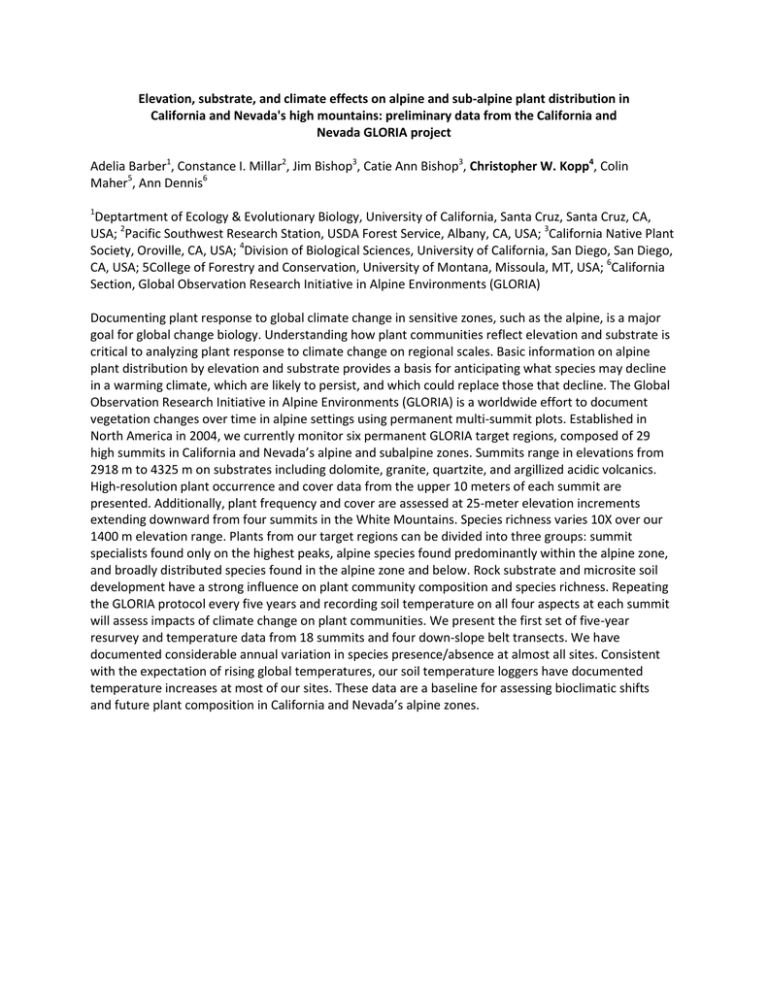
Elevation, substrate, and climate effects on alpine and sub-alpine plant distribution in California and Nevada's high mountains: preliminary data from the California and Nevada GLORIA project Adelia Barber1, Constance I. Millar2, Jim Bishop3, Catie Ann Bishop3, Christopher W. Kopp4, Colin Maher5, Ann Dennis6 1 Deptartment of Ecology & Evolutionary Biology, University of California, Santa Cruz, Santa Cruz, CA, USA; 2Pacific Southwest Research Station, USDA Forest Service, Albany, CA, USA; 3California Native Plant Society, Oroville, CA, USA; 4Division of Biological Sciences, University of California, San Diego, San Diego, CA, USA; 5College of Forestry and Conservation, University of Montana, Missoula, MT, USA; 6California Section, Global Observation Research Initiative in Alpine Environments (GLORIA) Documenting plant response to global climate change in sensitive zones, such as the alpine, is a major goal for global change biology. Understanding how plant communities reflect elevation and substrate is critical to analyzing plant response to climate change on regional scales. Basic information on alpine plant distribution by elevation and substrate provides a basis for anticipating what species may decline in a warming climate, which are likely to persist, and which could replace those that decline. The Global Observation Research Initiative in Alpine Environments (GLORIA) is a worldwide effort to document vegetation changes over time in alpine settings using permanent multi-summit plots. Established in North America in 2004, we currently monitor six permanent GLORIA target regions, composed of 29 high summits in California and Nevada’s alpine and subalpine zones. Summits range in elevations from 2918 m to 4325 m on substrates including dolomite, granite, quartzite, and argillized acidic volcanics. High-resolution plant occurrence and cover data from the upper 10 meters of each summit are presented. Additionally, plant frequency and cover are assessed at 25-meter elevation increments extending downward from four summits in the White Mountains. Species richness varies 10X over our 1400 m elevation range. Plants from our target regions can be divided into three groups: summit specialists found only on the highest peaks, alpine species found predominantly within the alpine zone, and broadly distributed species found in the alpine zone and below. Rock substrate and microsite soil development have a strong influence on plant community composition and species richness. Repeating the GLORIA protocol every five years and recording soil temperature on all four aspects at each summit will assess impacts of climate change on plant communities. We present the first set of five-year resurvey and temperature data from 18 summits and four down-slope belt transects. We have documented considerable annual variation in species presence/absence at almost all sites. Consistent with the expectation of rising global temperatures, our soil temperature loggers have documented temperature increases at most of our sites. These data are a baseline for assessing bioclimatic shifts and future plant composition in California and Nevada’s alpine zones.
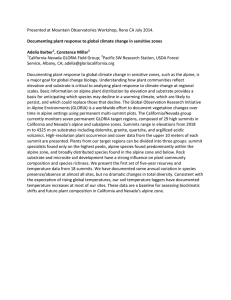
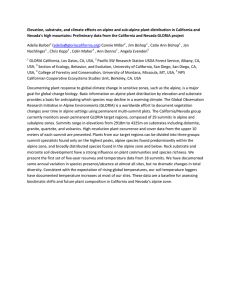
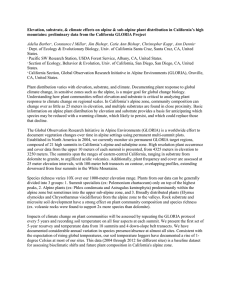

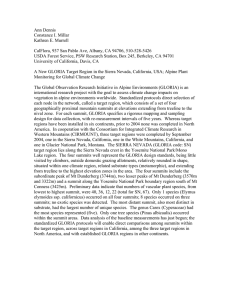
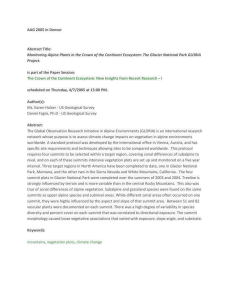

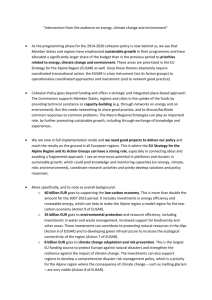
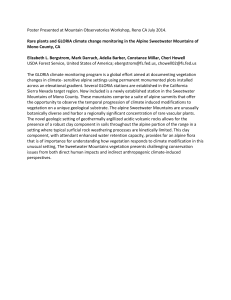
![Real-Life Climate Change Stories [WORD 512KB]](http://s3.studylib.net/store/data/006775264_1-25b312f26ec237da66580d55aa639ecf-300x300.png)

